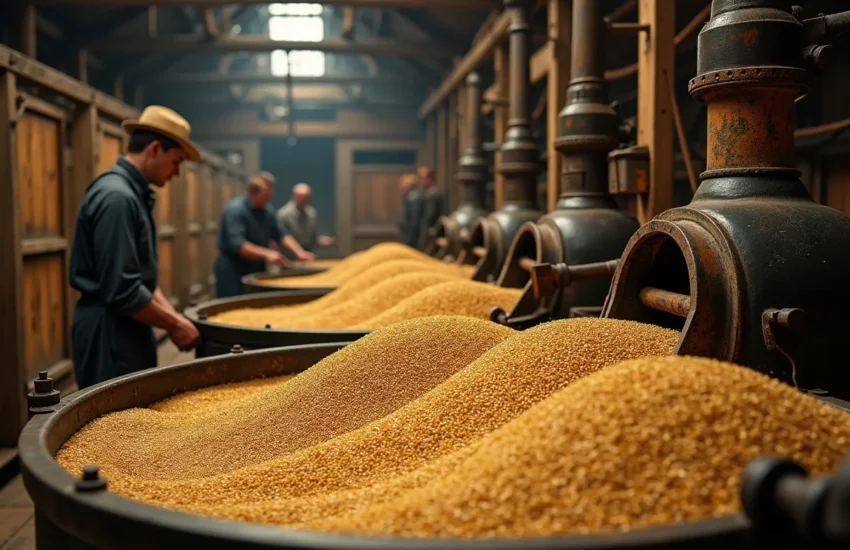The Ultimate Guide on How to Tell if Gold Is Real
Gold is one of those investments that never go out of style. Even if prices fluctuate a little bit, they stay pretty steady. There’s a reason why so many currencies have relied on a gold standard throughout history.
But how do you tell if gold is real or not? Counterfeiting has always existed, with shady individuals trying to pass gold plated or low purity materials off. Although there are protections in place, you could still get swindled today.
That’s why we’ve created a guide on how to tell if gold is real.
There are several ways you can make sure gold is real before you jump in. Gold is an unreactive metal, so you can run chemical tests on it. You can also test its weight and density against counterparts and look for karat stamps.
Read on to discover a full breakdown of these techniques!

Reactivity Test
Gold is pure and unreactive metal. It doesn’t tarnish, rust, or display any chemical changes. Before investing in gold, it’s worth making sure it’s the real deal. Bullionjoy provides low premiums when buying gold for investment in the UK.
You could run the nitric acid test, but this requires serious care. This acid is dangerous, so gloves, safety goggles, and proper ventilation are key. Another consideration is the fact this might cause slight damage during the test.
To do a nitric acid test, find a small spot on the gold object where you can make a tiny scratch on it. A small nail file or something similar will do. Apply a tiny drop of the acid on the scratch and observe the reaction.
Remember, pure gold doesn’t react. If you see any change in color or substance, it isn’t real gold. Gold-plated sterling silver will often result in a white substance, so look out for that.
Because the scratch will leave a mark, it isn’t advisable to do this for items that rely on their condition for value. Another way to test it is which a magnet. This won’t eliminate every gold imposter, but it will do a number on a lot of them.
Weight and Density Test
A great way to test if something is real gold is to check its weight and density. You should remember that gold has a particular density. Pure gold sits at 19.3g per mL, which you can check using a standard water displacement test and a little math.
Fill a container with water up to a measurable level (like 100mL). Drop your gold item inside and measure the difference in water level. This difference is the volume of your gold.
Divided the mass of your gold object by its volume, and you’ll get its density. The closer to 19.3g, the purer the gold, and you’ll notice the very best gold coins always reach that number. Before making gold investments, it’s worthwhile to be sure.
Fool’s gold will have a density around 5g, whereas silver sits around 10.49g. Sterling silver will be a little lower than that but still above 10g. Gold plated jewelry will fail to get anywhere near 19.3g, with most of them never surpassing silver’s 10.49g.
The only exception is tungsten, which has a near-identical density to pure gold. Plating would alter this measurement somewhat, but a pro will be able to spot the difference.
Check for Markings
Another way to check if your gold item is real or fake is through specific markings. These types of marks or stamps are also known as gold purity stamps. They often appear as numbers like 375, 585, 750, 916, 990, and 999.
Each number translates to the gold’s purity per part, which are 37.5%, 58.5%, 75%, 91.6% and 99% respectively. Other markings to look for are the classic 10K, 14K, 18K, 22K, and 24K. For cases like this, “K” stands for “karat” or parts of gold per item, with 24K being the purest form of gold.
Know that karat is the standard measurement for gold. Anything lower than that indicates other metals mixed in with the piece. 18K, for example, has 18 parts of pure gold, with its remaining 6 parts made up of other metal alloys.
These stamps are common across the globe. However, countries have a preference for the “~K” purity. That said, if your item is authentic, then you’re likely to notice any of these markings on it.
If you don’t see any of these but notice letter stamps like “GP” or “GF,” chances are your piece isn’t pure gold. GP stands for “gold plated,” while GF means “gold-filled.” So when you see stamps like these, they’re less likely to fetch a good price.
Have It’s Evaluated by a Professional
If you’re still unsure on how to tell if gold is real, then it’s time to consult a professional. A good example is if you’re planning to let go of a piece or are selling gold items or jewelry. This is especially true for more vintage or old-world gold jewelry.
However, the same still holds for newer jewelry. Recently colored gold (like rose or white gold) has increased in popularity. Innovations in mass manufacturing have made it more difficult to identify, especially if the goal is to counterfeit the item.
If you have any of these problems, then it’s time to take your pieces to a professional. They’re able to hold more types of tests without damaging the item. Some of these include the scratch test, where they rub the item on the surface of a black stone or ceramic.
The residue left will look like gold if it’s real or streaks of black if not. They can also use the nitric acid and aqua regia (hydrochloric and nitric acid) test safely. They can also show you how to do some of the tests yourself.
Now You Know How to Tell If Gold Is Real
Among the many things that hold value today, gold is one of them. Whether you are interested in investing or buying a jewelry piece, like gold pendants for men, it will always be in demand. This is what makes investing in it quite lucrative.
Though to start doing so, it’s always important to know how to tell if gold is real first. Find out how to do this and other things gold-related through our site. Read on and stay informed today.


